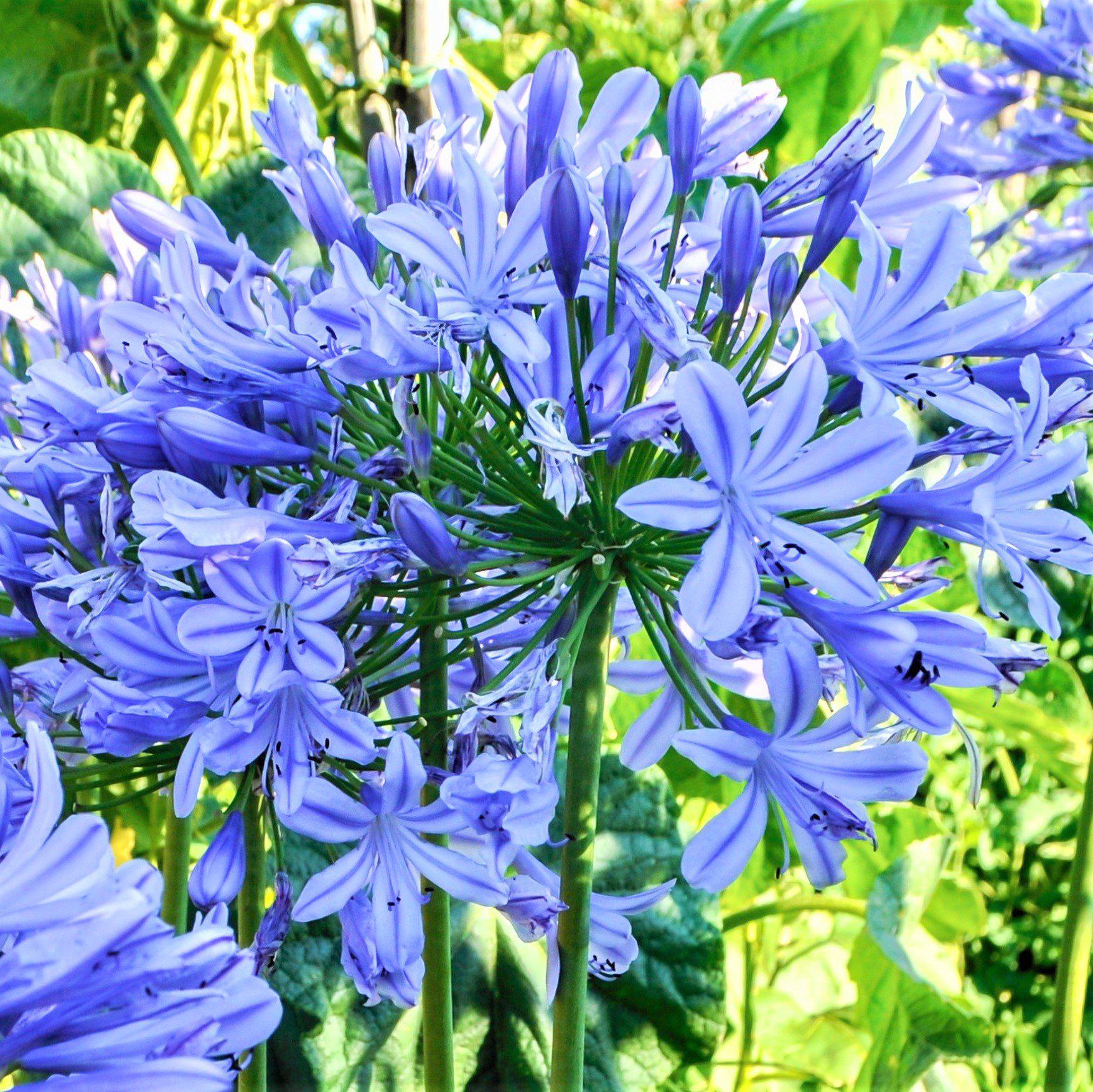Agapanthus Expanding Problems: Dirt, Sunshine, and Watering
Agapanthus Expanding Problems: Dirt, Sunshine, and Watering
Blog Article
Grasping the Art of Agapanthus Care: Important Steps for Healthy And Balanced Growth and Vivid Blossoms
In the world of cultivation, the farming of agapanthus stands as a fulfilling endeavor for those that look for to nurture these sophisticated flowering plants. From choosing the appropriate variety to grasping trimming techniques, the journey in the direction of growing prospering agapanthus plants is complex and holds the key to unlocking the complete potential of these organic treasures.
:max_bytes(150000):strip_icc()/agapanthus-growing-guide-7368912_hero-a3585e4f9ffe4b99a73c7ad8eb4ebe48.jpg)
Choosing the Right Agapanthus Selection

When choosing the appropriate Agapanthus variety for your garden, consider aspects such as climate suitability, blossom color, and development routine. Furthermore, consider the environment in your region to ensure the Agapanthus variety you pick can flourish in your specific conditions. Understanding the growth routine of various Agapanthus ranges is crucial for appropriate positioning within your yard.
Ideal Growing Conditions
Taking into consideration the optimal ecological needs is vital for effective Agapanthus growing. Agapanthus plants are delicate to cool temperatures and ought to be secured from frost throughout wintertime months.
To make certain healthy growth and dynamic flowers, plant Agapanthus bulbs at a depth of about 2-4 inches and room them 8-12 inches apart. Including raw material, such as garden compost, to the dirt can boost water drainage and fertility, promoting robust root growth. Mulching around the base of the plants helps retain moisture and reduces weed development. Normal watering is important, specifically throughout the expanding period, to maintain the dirt continually wet yet not saturated.
Watering and Fertilizing Tips
Keeping appropriate wetness degrees and providing essential nutrients are key elements in the treatment program for Agapanthus plants. When it comes to watering Agapanthus, it is crucial to strike an equilibrium. These plants prefer regularly moist dirt but are prone to root rot if overwatered.
Feeding Agapanthus is crucial for advertising healthy and balanced growth and prolific blossoms. Apply a well balanced fertilizer, such as a 10-10-10 formula, in the early spring as new development emerges. Repeat this application every 6-8 weeks throughout the expanding period. Prevent too much fertilization, as it can bring about rich vegetation at the expense of blossoms. Always comply with the manufacturer's directions for correct dilution and application methods. By adhering to these watering and fertilizing ideas, you can guarantee your Agapanthus plants flourish and generate dynamic, long-lasting flowers.
Trimming Techniques for Agapanthus
Trimming Agapanthus plants at the suitable times and with appropriate techniques is important for keeping their health and wellness and advertising optimum development and blooming. The ideal time to prune Agapanthus is in late winter or early springtime prior to brand-new development arises.
Deadheading spent blossoms can likewise reroute the plant's power into producing more blossoms instead than establishing seeds. If you desire to gather seeds for proliferation, leave some flowers to dry and fully grown on the plant.
Keep in mind to use tidy, sharp tools to make accurate cuts and decrease the threat of presenting illness. Agapanthus. Regular trimming will certainly assist keep your Agapanthus looking cool and healthy and balanced while making certain an abundant display screen of beautiful blossoms
Handling Usual Parasites and Conditions
After guaranteeing proper trimming techniques for Agapanthus, it is crucial to attend to common bugs and diseases that can influence the health and wellness and vigor of these plants. Agapanthus plants are generally sturdy but can still come down with certain issues. One common pest that impacts Agapanthus is the Check This Out Agapanthus gall midge. This tiny, orange fly lays its eggs in the foliage, resulting in altered growth and flower buds that stop working to open. To fight this parasite, prune and damage any kind of affected plant parts and consider utilizing insecticidal soap.
One more typical problem is fungal leaf spot, which presents as dark sores on the fallen leaves. To avoid fungal illness, make sure great air circulation around the plants, prevent overhead watering, and eliminate any infected leaves quickly. In addition, Agapanthus plants can endure from root rot if from this source they are grown in inadequately draining pipes soil. To avoid this, plant Agapanthus in well-draining dirt and avoid overwatering. By being alert and taking prompt action versus conditions and bugs, you can help your Agapanthus plants flourish and create vibrant flowers.

Conclusion
Finally, mastering the art of agapanthus care includes selecting the appropriate range, offering ideal planting problems, correct watering and fertilizing, ideal trimming techniques, and resolving common pests and conditions. By complying with these important actions, you can ensure healthy growth and dynamic flowers for your agapanthus plants. Keep in mind to consistently keep track of and keep your plants to promote their general well-being and durability.
To ensure healthy growth and vivid blossoms, plant Agapanthus light bulbs at a depth of about 2-4 inches and space them 8-12 inches apart. By following these watering and fertilizing pointers, you can ensure your Agapanthus plants flourish and create lively, long-lasting blossoms.
One usual bug that affects Agapanthus is the Agapanthus gall midget. Additionally, Agapanthus plants can suffer from origin rot if they are planted in badly draining soil. By complying with these crucial click here for more steps, you can guarantee healthy growth and vibrant blossoms for your agapanthus plants.
Report this page